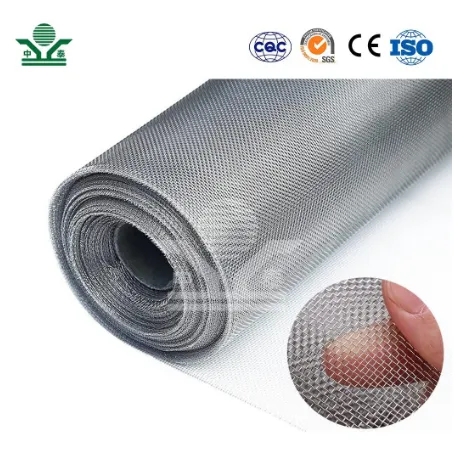Exploring Expanded Metal Mesh Thickness Understanding Its Role and Applications
Expanded metal mesh, a versatile and widely used material, plays an essential role in various industries from construction to agriculture. The unique formation process of this mesh involves cutting and stretching metal sheets, resulting in a pattern of interconnected diamond-shaped voids. One of the critical factors influencing the functionality and utility of expanded metal mesh is its thickness, which impacts strength, weight, and application suitability.
Understanding Expanded Metal Mesh Thickness
The thickness of expanded metal mesh refers to the gauge of the original metal sheet before expansion. This thickness varies depending on the intended application and desired properties of the mesh. Generally, thicker sheets lead to a stronger and more durable mesh, while thinner sheets offer lightweight solutions that are easier to handle and install. The gauge of expanded metal can range from very thin (around 1 mm) to thick (up to 10 mm or more). Each thickness comes with its advantages and considerations.
Implications of Thickness on Strength and Durability
When selecting expanded metal mesh, thickness significantly influences its load-bearing capabilities and overall durability. Thicker meshes exhibit higher tensile strength, making them ideal for supporting heavy loads, such as in industrial flooring or security applications. They can withstand considerable impact without deforming, which is crucial in environments where wear and tear are common.
Conversely, thinner meshes, while less durable, are commonly used for lighter applications like fencing, decorative elements, or as a protective screen in ventilation systems. The choice of thickness should therefore align with the specific demands of the project, considering factors such as the environmental conditions, expected loads, and any regulatory requirements pertinent to safety and construction standards.
expanded metal mesh thickness

Applications of Expanded Metal Mesh Based on Thickness
The application of expanded metal mesh is vast and varied, heavily influenced by its thickness. In the construction industry, thicker expanded metal is frequently used in walkways, stairs, and platforms where additional strength is essential. It provides safety and stability while preventing debris accumulation, enhancing worker safety in industrial settings.
In contrast, thinner expanded metal finds utility in architectural design, offering aesthetic appeal without compromising structural integrity. It can be employed in building facades, balconies, and even as decorative features in interior design, providing a modern and industrial look.
Agriculture also benefits from expanded metal mesh, with thicker versions used for cattle enclosures and protective barriers, while thinner options serve as mesh for nurseries and greenhouses, promoting sufficient light and airflow for plants.
Maintenance and Considerations
When discussing expanded metal mesh thickness, it’s also essential to consider maintenance requirements. Thicker meshes are often more resistant to corrosion and damage, making them suitable for outdoor and harsh environments. However, proper treatment and coatings can enhance the longevity of thinner options, ensuring they remain functional and visually appealing.
In summary, the thickness of expanded metal mesh is a critical determinant of its suitability for various applications. By understanding the strengths and limitations associated with different gauges, users can make informed decisions that align with their specific needs, ensuring they choose the right type of mesh for the job. As industries continue to evolve and demand for innovative solutions grows, expanded metal mesh will remain a staple material, valued for its versatility and strength, tailored to meet the challenges of modern applications.
-
Comprehensive Guide to Steel Grating Price and Its Global Impact
NewsNov.24,2025
-
Understanding Heavy Duty Steel Grating Price: Global Insights & Industry Trends
NewsNov.23,2025
-
Essential Guide to Wire Mesh Grating: Uses, Benefits & Innovations
NewsNov.23,2025
-
Welded Steel Bar Grating: Durable Solutions for Industrial Walkways & Infrastructure
NewsNov.22,2025
-
Wedge Wire Drain Solutions: Durable, Efficient Water Filtration and Drainage
NewsNov.22,2025
-
Comprehensive Guide to Twisted Bar Grating – Uses, Benefits & Future Trends
NewsNov.22,2025
Subscribe now!
Stay up to date with the latest on Fry Steeland industry news.

